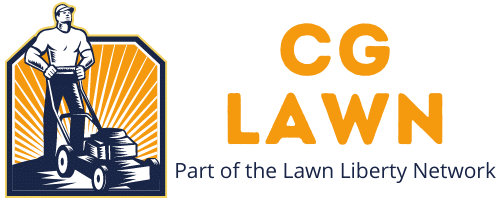I’ve often noticed homeowners use the words annual ryegrass and perennial ryegrass interchangeably probably because they share the same “ryegrass” name. However, there are several distinct characteristics and uses between the two types.
Annual vs perennial ryegrass key differences are:
- Annual ryegrass completes its lifecycle within a year, whereas perennial ryegrass grows for several years
- Annual ryegrass germinates quickly, but perennial ryegrass isn’t as quick to germinate.
- Annual ryegrass is usually used as a temporary cover in lawns, sports fields, and other areas, and perennial ryegrass in grass seed blends and for overseeding warm-season lawns.
Here’s a detailed guide that covers the differences between the two types of grasses to help ease your decision.
Annual Ryegrass (Lolium Multiflorum) Explained
When your lawn demands quick color and fast establishment, count on annual ryegrass to get the job done! Also referred to as Italian ryegrass or English ryegrass, annual ryegrass is a great choice whether you need temporary winter color in southern lawns or temporary support for a permanent northern lawn.
Annual ryegrass is planted all over the world on its own or blended with several grass seed mixtures. This cool-season grass boasts unmatched adaptability to many soils and climates.
This coupled with quick germination, and outstanding growth rates make it a terrific grass type for establishing thousands of lawns and pastures in all, but the hottest of planting regions.
Annual Ryegrass Key Benefits
- Erosion control – annual ryegrass has a superior soil-holding root system and establishes fast even in rocky, poor, or wet soils. Once established, it provides great tolerance from flooding, making it a great choice for grass waterways, field strips, or exposed areas.
- Weed suppressor – annual ryegrass when mixed with legumes or grasses establishes first and improves early-season weed control.
- Nutrient catch crop – annual ryegrass is a high nitrogen (N) user and can preserve leftover N to serve as a valuable nutrient delivery tool to your other crops.
When Should You Use Annual Ryegrass?
Annual ryegrass proves extremely handy when used as a fill-in grass planted in slower-growing permanent lawns. It works well for short-term seasonal use in planting zones that reach below the transition zone and makes a great fill-in to create green grass on new grass areas.
This quick-growing, non-spreading bunch grass does a super job at holding soil and effectively outcompetes weeds. If you want to build soil structure in vineyards, orchards, and other croplands to enhance water-holding capacity, water filtration, or irrigation efficiency, then consider annual ryegrass.
Adding to this annual ryegrass can also decrease disease, reduce soil splash on solanaceous crops and small fruit crops, and increase forage quality. Annual ryegrass can also be overseeded readily into soybeans, corn, and other high-value crops.
Perennial Ryegrass (Lolium Perenne) Explained
Perennial ryegrass offers a long service life year after year as a lawn or pasture grass in the Northern USA.
Just like annual ryegrass, perennial ryegrass is a cool-season grass that is noted for its quick germination, and due to its versatility is often incorporated in grass seed mixtures with other grasses. Did you know that perennial ryegrass germinates faster than any other common lawn grass?
Similarly, it can tolerate wet soils but does not offer great performance during drought or long periods of high temperatures. Furthermore, it cannot withstand severe winters and does not do well in low-fertility soils that are dry in the summer
For example, perennial ryegrass seed is often mixed with Kentucky bluegrass (a cold-season grass that is very slow to germinate) seed to add strength and allow the latter to repair itself, while the former is in its full growth mode.
It can also be overseeded in dormant bermudagrass (a perennial warm-season grass) lawns, as doing so will provide green color throughout the winter as the bermudagrass loses its color in the fall.
There are more than 200 varieties of perennial ryegrass currently sold in the US market, and worldwide. Each of these varieties is developed in a bid to improve color, leaf structure, resistance to coldness, drought, diseases, and lower growth for mowing heights.
Perennial Ryegrass Key Benefits
- Great wear tolerance – perennial ryegrass best adapts to coastal regions that experience moderate temperatures throughout the year. It boasts the highest wear tolerance than any other grass in the cool-season segment, which is why it is often used in schools, homes, parks, golf course fairways, and tees or baseball fields.
- Establishes rapidly – this high-yielding cool-season grass germinates rapidly, and boasts a long growing season.
- Disease tolerance – perennial ryegrass can enhance wear and disease tolerance in a lawn when mixed with other types of grasses that fall short in those areas.
When Should You Use Perennial Ryegrass?
Perennial ryegrass is ideally used for seed mixtures and is often regarded as a nurse grass, given that it is often included in grass seed blends, owing to its ability to germinate rapidly (seed to mow-able lawn in about 21 days) and offers shade and protection to other grass species.
Even though it is hardy, low-maintenance grass, it has innate disease and insect resistance abilities and is used in several prestigious locations around the country including turf grass at the August National Golf Club (home of the Masters) and Wimbledon Tennis Club.
Perennial ryegrass showcases an appealing pale green color and can prevent erosion quickly, making it a great choice for steep banks like on roadways and ditches. Another noteworthy benefit of perennial ryegrass is it is highly digestible, and a favorite for all grazing animals.
Annual vs. Perennial Ryegrass – Key Differences
Both annual and perennial ryegrasses can offer a green winter lawn overseeded on warm-season grasses that tend to go dormant in the fall or winter. They also add nutrients, and contrasting colors to early spring flowers, trees, and shrubs.
The biggest difference between these two species of ryegrass is their lifecycle, where annual ryegrass just as the name would suggest needs to be replanted every year, and perennial offers a continuous lifecycle year after year.
Perennial ryegrass may go dormant during the warmer months of the year but does rebloom during the cool season months of the year. This is a highly important aspect to consider when choosing between annual ryegrass and perennial ryegrass.
Annual ryegrass is identifiable for its leaf blades rolled into the bud in contrast to those folded into the bud in perennial ryegrass. Another notable difference between the two types is their growth height, where annual ryegrass can grow up to a height of five feet, and perennial ryegrass is between one to two feet tall with a bunchy form.
Annual or Perennial Ryegrass — Which One Should You Choose?
This depends on your needs, but here’s the lowdown to ease your decision! Annual ryegrass has very few disadvantages, with the biggest one being the end of the lifecycle, so you will have to put in the time and effort to repeat the process.
Perennial ryegrass does have its fair share of disadvantages as well, starting with mandatory proper irrigation for success. While annual ryegrass may be mowed in some cases to prevent it from competing with vines, mowing perennial ryegrass is a bit challenging as you may have to mow it frequently to maintain the recommended mowing height of 1 1/2 to 2 1/2 inches.
Even though the appearance of these two types of grasses is similar, and both are best suited for the cooler sections of the country, annual ryegrass is an impermanent grass used to provide quick color, and erosion control for just one season.
Perennial ryegrass is a hardworking grass that can be used for both temporary and permanent lawns and is a great choice when looking to overseed existing warm-season lawns in fall.
Sources:
Hi, Alex Kuritz here. Growing up I remember that my family had one of the best lawns in the neighborhood. Richly green and lush. I did a lot as I grew up in terms of caring and tending for not only my family’s lawn but also my neighbors. I can say I have years of experience, and I am here to share it with you.


